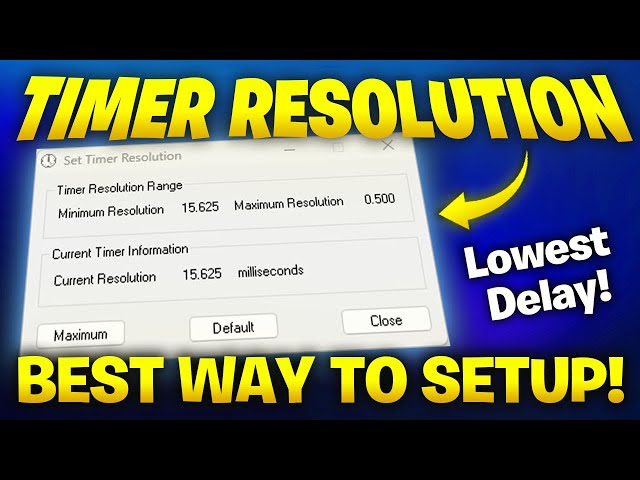Okay, so the other day I was messing around with my Windows computer and stumbled upon something called “timer resolution.” I got curious, so I dug into it. Turns out, it’s like the heartbeat of your computer’s clock. The default setting is pretty chill, usually around 15.6 milliseconds, meaning the clock updates like 64 times a second. Not bad, but I wondered if I could crank it up.
I did some digging and discovered that some programs, like media players or even certain games, they like to bump up that timer resolution for smoother performance. They might kick it down to 1 millisecond, making the clock tick way faster. This got me thinking, could I do this myself, and what would happen if I did?

I found this little tool called “Timer Resolution” – super straightforward name, right? It lets you manually adjust the timer resolution with just a few clicks. So, I installed it, fired it up, and saw my default was indeed at that 15.6-millisecond mark. I decided to go all in and set it to the minimum, 0.5 milliseconds. I was expecting to see some crazy improvement in how my computer ran or maybe in how fast my apps started.
But honestly, nothing felt different. I mean, I wasn’t expecting miracles, but I thought maybe some tasks would feel snappier. Nope. Everything was just… normal. I played some games, opened a bunch of programs, and it was all the same as before. It made me wonder if messing with the timer resolution was even worth it. It’s like those old stories, “your eyes can only see 24fps anyway”.
Then, I started reading about how, back in the day, changing the timer resolution was a system-wide thing. But with newer versions of Windows, it’s more of a per-process deal. So, maybe my little experiment didn’t really do much because the system is smarter now and only gives that extra juice to programs that actually need it.
So, what’s the takeaway? Well, for most of us, messing with the timer resolution probably isn’t going to do much. Windows is pretty good at managing things on its own. And those programs that need a faster clock? They’ll usually take care of it themselves. Still, it was a fun little dive into the guts of my computer. And hey, at least now I know what that “timer resolution” thing is all about!
- The default is chill: Most of the time, your computer is happy with its 15.6-millisecond timer resolution.
- Some programs speed things up: Media players and games might need a faster clock, so they’ll adjust it themselves.
- Manual changes might not do much: Newer versions of Windows handle timer resolution on a per-process basis, so changing it yourself might not have a big impact.
- It’s probably best to leave it alone: Unless you really know what you’re doing, it’s probably not worth messing with.
My Final Thought
It was a cool little experiment, but I’m just going to let Windows do its thing. It knows what’s best, I guess.















